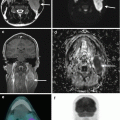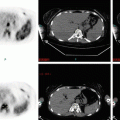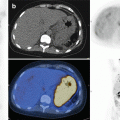Fig. 3.1
Management of early stage cHL
3.6 Treatment of Advanced-Stage Disease
ABVD (six to eight cycles) or escalated BEACOPP (six cycles) is recommended for advanced disease. ABVD is associated with PFS of about 70% and overall survival of 82–90%. Escalated BEACOPP gives better PFS, but no improvement in long-term overall survival. In the UK, the balance of efficacy to toxicity has favoured the use of ABVD.
A negative interim PET/CT after two cycles of ABVD or BEACOPP is predictive of favourable PFS. The UK RATHL study has recently shown that a risk-adapted approach, with two cycles of ABVD followed by an interim PET/CT to inform decisions about treatment escalation (to escalated BEACOPP) or de-escalation (omission of bleomycin in ABVD), is a feasible strategy. Early results are promising, however, further follow-up is warranted.
Radiotherapy was traditionally offered to patients with bulky disease; however, in PET/CT era, the need for radiotherapy in patients with an end-treatment PET/CT showing complete metabolic remission is controversial. Consolidation radiotherapy is not indicated for patients in CR by CT following ABVD or those with residual masses >2.5 cm if in metabolic CR after escalated BEACOPP. It is uncertain whether RT can be omitted if metabolic CR is achieved after ABVD with PET negative residual soft tissue (>1.5 cm).
High-dose chemotherapy and autologous stem cell transplantation in first remission do not confer a survival benefit over observation alone and are not therefore recommended.
3.7 Follow-Up Evaluation
Patients are usually followed up using clinical and laboratory parameters 3–6 monthly for up to 3–5 years. Follow-up PET/CT should not be used routinely. Management decisions should not be based on PET scan alone-clinical and/or pathologic correlation is always needed.
Assessment for late effects of combined modality treatment, including fertility problems, cardiac and pulmonary toxicity, secondary solid cancers, myelodysplasia and hypothyroidism is required. The incidence of infertility in adults <30 years with ABVD is low and significantly higher with escalated BEACOPP. An eight-fold increase in breast cancer risk is reported after axillary/mediastinal irradiation in females aged 10–30 years-these women should be offered early breast screening.
3.8 Management of Refractory and Relapsed Disease
Overall about 10% of early stage and 20–30% of advanced stage cHL patient will have primary refractory disease or experience relapse after ABVD. Refractory disease and short remission durations of <12 months have poorer outcomes. The current approach in the majority of fit patients of <60–65 years, is to use a second-line (salvage) chemotherapy regimen (e.g., ESHAP, IGEV, ICE) to obtain a second remission, as assessed by PET/CT, prior to high-dose therapy and autologous stem cell transplantation (ASCT). A negative scan pre-ASCT is highly predictive of a favourable outcome (>70% 5-year PFS). PET-positive patients have a poor outcomes (25–30% 3–5-year PFS) and should generally not proceed to ASCT. Overall, after ABVD failure, over 60% of relapsing patients and about 30% of primary patients can be cured with this approach, with a procedure-related mortality of about 3%.
Stay updated, free articles. Join our Telegram channel

Full access? Get Clinical Tree







